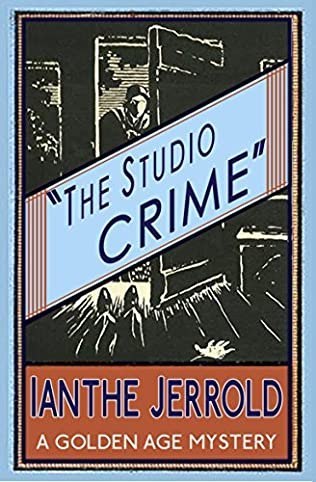The Studio Crime

The Studio Crime – Ianthe Jerrold
I have a soft spot for Ianthe Jerrold as she is the only author I have come across who included a character bearing my surname, William Fone in Let Him Lie. The Studio Crime is an earlier work, first published in 1929 and now reissued by Dean Street Press for a modern audience to rediscover, is regarded as being the first of only two Golden Age Detective murder mysteries that she wrote. I thoroughly enjoyed it, a veritable page turner, even though I had twigged who the murderer was fairly on.
Central to the investigation is Jerrold’s amateur sleuth, John Christmas, who, as is the way with these stories, just happened to be in the flat downstairs when the murder was discovered. The story is laced with nods to Conan Doyle, Christmas taking on the Holmes role while Laurence Newtree plays the part of Watson, although the relationship is more robust and less subservient. Inspector Hembrow who heads the investigation for the police, is the Lestrade character and having collaborated with Christmas before is happy to have him lend a hand. The police, of course, make a pig’s ear of the investigation, pursuing the wrong man, their incompetence allowing Jerrold to impress upon her readers the brilliance of her man.
A motley collection of characters assembles at Newtree’s studio for a soiree. Among their number is a prominent philanthropist, Sir Marion Steer, a psychologist, Dr Simon Mordby, a general practitioner, Dr Merrewether, a playwright, Serafine Wimpole and her aunt, Imogen. It is a typically foggy London evening, ideal for crime, as Serafine notes, and on their way two of the guests are approached by an exotic individual wearing a red fez, asking for directions.
Newtree has an invitation to take his guests to the upstairs flat occupied by Gordon Frew, a noted collector. They hear a noise and Merrewether, Frew’s doctor, goes up to investigate, reporting that all is well. When it is time for the party to go upstairs, they find the door locked and upon breaking it down, discover Frew slumped over his desk with a knife in his back. It emerges that Frew had two other visitors that evening, a man wearing a fez and wonderfully named Pandora Shirley. To add to the confusion, the police surgeon reckoned that Frew had died before Merrewether went up to the flat and swore that he was still alive.
Inevitably, the police think that Merrewether was the murderer, but Christmas is not so convinced. Investigations reveal that Frew was not the man he appeared to be, that he had a murky past and was not above a spot of emotional blackmail. What had his past misdemeanours in the United States committed with his two other brothers to do with the case and had Mordby and Merrewether’s long-standing feud over a woman who turns out to be Frew’s estranged wife anything to do with it? And who was the mysterious man with the red fez?
There are enough red herrings and suspects with motive enough to do away with Frew to keep the momentum of the story going and the denouement cleared up most, if not all, of the loose ends. Clever as this take on a locked room murder mystery is, Jerrold’s characterisation leaves a little to be desired. Only really Serafine Wimpole, a character said to be based on Jerrold herself, really stood out, the rest being rather stereotypical. Comedic value was provided by her aunt who formed part of the set of well-to-do with little-to-do that Mordby enlisted into his clientele and, sadly, the lower orders.
That aside, it was an enjoyable romp and I will look forward to reading more from this once popular but now rather obscure author.



